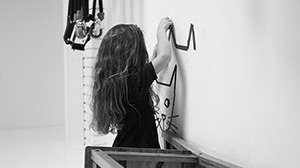STEAM is the future and fortunately for students, learning it is fun

As technology continues to change what businesses do and how they operate, so too does the way we need to prepare children for success in this new world of work. While it is hard to predict the jobs of the future, we know employers are increasingly looking for people who have a combination of transferable digital skills and collaborative, creative, communication, and problem-solving skills.
STEAM education in Australia
In recent years, there has been a greater emphasis on integrating science, technology, engineering and math (STEM) concepts with the arts (STEAM) across the wider curriculum, particularly in the primary and early childhood education setting. The Australian Curriculum highlights the importance of STEAM education to help students develop a broader set of skills to prepare for future education and careers.
It is exciting to see so many STEAM concepts embedded into everyday curriculum across Australia. However, the emphasis on the content of STEAM subjects has led to an increased use of didactic methods and more focus on quantifiable academic achievements. By focusing exclusively on what is quantifiable, educators have less time to promote the development of 21st century skills in students.
The role of learning through play in STEAM
To set students up for success in the future workforce, we need to rethink learning to consistently provide engaging, meaningful, and playful experiences for students that develop STEAM knowledge and a breadth of skills – social, emotional and creative – to ultimately build learner confidence and agency. One approach that has been gaining global momentum is play-based learning or learning through play.
Evidence shows that learning through play is an integrated pedagogy, which can be seen as highly effective in building holistic skills alongside academic content and high student engagement. A play-based approach involves both child-initiated and teacher-supported learning. In this context, children can explore, experiment, discover, and solve problems in imaginative and playful ways.
Despite the benefits, many educators still minimise the opportunities for playful learning in favour of didactic approaches. One explanation could be that “play” and “learning” are seen as dichotomous concepts – play is seen as pure “free play” and educators often turn to teacher-led learning and direct instruction methods to produce standardised results on cognitive skill tests.
In play-based approaches, time spent in play is seen as important for learning, not as a reward for good behaviour. In such environments, children have greater, active input into what and how they learn. Here are some ways educators can confidently teach STEAM through play to create future-ready students.
1 Make it meaningful and engaging
When students are engaged, learning becomes more motivating, memorable and meaningful. It’s also an important characteristic of learning through play to help children find meaning in what they are learning. That’s why learning solutions like LEGO® Education SPIKE Essential use a narrative-based approach with familiar themes like carnival rides and types of transportation to teach STEAM concepts, while also contributing to literacy, math and social-emotional development.
In the lesson plans, students are tasked with helping the minifigures – who have their own distinct personalities – solve problems, creating a connection to the lesson and making that ‘aha’ moment even more meaningful for the kids. For example, students are asked to help a character called Leo create an animal alarm, so he won’t miss any animals walking by his campsite while he's asleep. As they help Leo, they’re also learning about cause and effect and practicing coding skills to activate the alarm.
2 Make it iterative and interactive
By actively exploring the concepts of gears, balance, and movement to build roller coasters or ferris wheels, for example, students are trying out different possibilities, revising their hypotheses and exploring the next question. This gives students the opportunity to learn creatively and helps to grow a future-ready workforce that understands the potential of “what if” when solving real-world problems.
Social interaction is also a powerful outcome when learning through play. By working in pairs or teams, students naturally develop new skills such as cooperation and collaboration, sharing and responding to ideas, negotiating, and resolving conflicts – all critical skills they’ll need in the workplace.
3 Finally, make it joyful!
Joy is at the heart of play whether expressed as pleasure, enjoyment, motivation or thrill. By solving problems in new and exciting ways, students are actively engaged, their discoveries visible in the enthusiastic “aha” moments. Through play-based approaches, students enjoy learning while benefiting from the acquisition of new skills and knowledge.
Highly engaging, hands-on, playful learning is one of the most important ways in which educators can not only prepare students for the future, but support Australia’s future businesses and society.